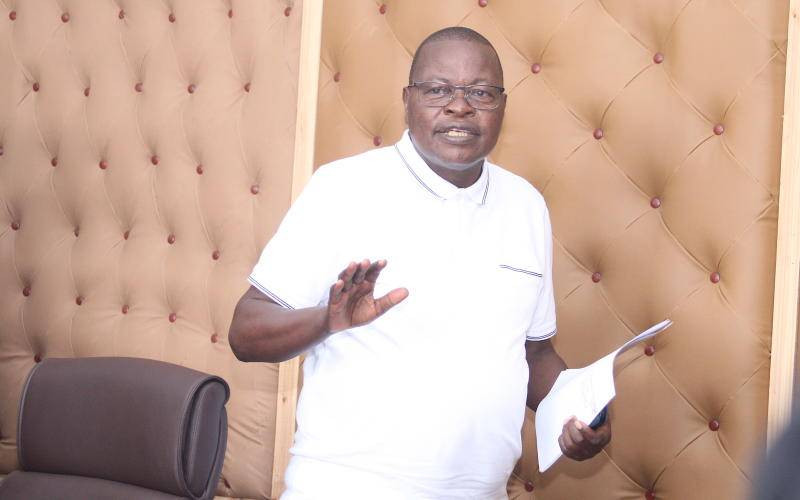Florida's "Arrive Alive" Campaign Is a Sobering Reminder: 10 Talks Every Parent Needs to Have With Their Teen Driver
Handing over the car keys for the first time is a moment filled with a mix of pride and gut-wrenching anxiety. You’ve taught them to look both ways and use their turn signal, but the reality of them driving alone is an entirely different worry. That concern is sadly well-founded, especially here in Florida.
The state’s “Arrive Alive“ campaign is a constant, sobering reminder of the stakes. The need for such initiatives is clear when you look at the numbers. In one recent year, Florida traffic deaths surged to over 3,000, marking the deadliest year in nearly a decade. The state consistently ranks among the highest traffic fatalities in the country, a grim statistic influenced by population growth and millions of tourists on unfamiliar roads.
This isn’t just about statistics; it’s about the kids. To turn that parental concern into action, here are ten essential conversations every parent needs to have with their new teen driver. These talks can help build the foundation for safe habits behind the wheel.
You need to help your teen visualize the risk in a way that sticks. Explain that texting while driving isn’t just illegal; it’s a dangerous gamble with physics. Taking your eyes off the road while going at 55 mph for even five seconds is like traversing the entire length of a football field blind. A lot of bad can happen in those 100 yards.
Discuss the real consequences that go far beyond a fine or points on their license. Make them understand that a fatal car accident in Fort Myers today is a real possibility when driving distractedly. Agree on a strict no-phone use policy while the car is in motion. This isn’t up for debate.
Before they drive, sit with them and set their phone to Do Not Disturb While Driving mode. Show them how to use voice commands for essentials like music or calls, so their hands remain on the wheel and eyes on the road.
Having friends in the car is a rite of passage for many teens, but it also comes with serious responsibility. Having teen or young adult passengers increases the risk of an accident for unsupervised teen drivers. Research shows that a teen driver’s crash risk increases by 44% with just one passenger under the age of 21, and the risk multiplies with each additional young passenger. With three or more, that risk quadruples. Distraction and peer pressure can be overwhelming for an inexperienced driver.
Frame the rules to build their confidence without the pressure of performing for an audience. Establish a firm rule of no peer passengers for the first six months. After that, gradually allow one trusted friend at a time.
Create a written Parent-Teen Driving Agreement outlining passenger limits and the consequences for breaking them, such as losing driving privileges for a week.

Florida’s Graduated Driver Licensing requirements exist for a reason. Night driving is high-risk due to lower visibility, tired drivers, and a higher chance of encountering impaired drivers. For 16-year-olds, driving is prohibited between 11 p.m. and 6 a.m. For 17-year-olds, it’s from 1 a.m. to 5 a.m.
Follow these rules strictly and explain why they’re in place. It isn’t about being unfair; it’s about keeping them safe during the riskiest hours. For any approved exceptions, like a late shift at work, require them to share their location and stick to a well-lit, approved route.
Use a family location-sharing app that provides peace of mind and confirms they’ve arrived safely without needing to send a text.
This is one of the most important promises you can make as a parent. Tell your teen that if they ever feel unsafe driving or riding with someone—whether due to alcohol, drugs, or simply not feeling alert—they can call you for a ride. Day or night, no lectures or punishment. The goal is to ensure they never think risking their safety is a good idea.
Practice what to say and do together. Run through phrases that can help them exit a high-pressure situation calmly.
Have them save your number and a trusted rideshare app on their phone. Make this their go-to emergency plan so they don’t hesitate in a stressful moment.
Florida weather can change from sunny to dangerous in minutes. A simple shower can create slick, risky road conditions. Create specific plans for when that heavy rain arrives on the highway.
, slow down immediately, turn on headlights (required in Florida when wipers are on), and increase your following distance. Avoid using hazard lights while moving, as they can confuse other drivers. , instruct your teen to take their foot off the gas gradually and avoid slamming on the brakes; instead, steer gently in the direction they want to go until traction returns.
| Weather Condition | Recommended Action |
|---|---|
| Heavy Rain | Slow down, use headlights, and increase following distance |
| Hydroplaning | Easing off the gas, avoiding hard braking, and steering gently |
Assemble a car emergency kit with a poncho, a flashlight with fresh batteries, basic first-aid supplies, and a phone charger for unexpected stops.
Road rage is a serious issue. Teach your teen that their main priority is arriving safely, not confronting aggressive drivers. Advise them not to engage, avoid eye contact, steer clear of confrontations, and, if followed, head to a busy, well-lit area and call 911 or the nearest police station.
Consider installing a dashcam. It can objectively document incidents for a police report without requiring your teen to handle the situation directly.
Knowing the basics about their car can prevent panic when something goes wrong. Teach your teen simple monthly checks they can perform: using a gauge to check tire pressure, the penny test for tread depth, and checking fluid levels like oil and windshield washer fluid.
Practice handling common roadside emergencies in a safe setting. Demonstrate how to pull over for a flat tire, recognize dashboard warning lights, and know when to call for roadside assistance. A recent survey suggests that nearly half of drivers regularly see a dashboard warning light—such as tire-pressure or check-engine alerts—and choose to ignore it. Meanwhile, other studies show that around 46% of drivers can’t recognize even half their dashboard warning lights, with just 3% able to identify them all, highlighting a critical gap in vehicle safety awareness.
Keep a contact card with phone numbers for your preferred mechanic and roadside assistance service in the glove box.
Panic is a natural reaction to a car crash. A memorized step-by-step plan can help counter that panic. Teach your teen to follow these steps:
Keep a printed accident checklist and a pen in the glove compartment for use in stressful moments.
In today’s world, a phone doubles as a map. Establish one simple rule: always program the destination before turning on the car. Adjusting a navigation app while moving is as distracting and risky as texting.
Teach your teen to use voice commands for any adjustments and to mount the phone in a hands-free holder so directions remain in view without needing to hold the device.
Review the navigation app settings before driving in unfamiliar areas and adjust route options to avoid complex intersections until they gain more confidence.
The conversation about accidents shouldn’t end at the scene. After the immediate crisis is over, it’s crucial to obtain the official police crash report. This document is vital for filing insurance claims, protecting legal rights, and ensuring accurate documentation of what happened.
Several resources make this process easier for families in Southwest Florida. The Florida Crash Portal allows you to download official crash reports statewide for a small fee, typically within 10 days of the incident. Local law enforcement agencies, like the Fort Myers Police Department, also provide crash reports either in person or through their websites.
Bookmark a reliable resource on your teen’s phone to make it easily accessible during the stressful aftermath of an accident.
These conversations aren’t about scaring our teens; they’re about equipping them with the knowledge and confidence to manage the serious responsibility of driving. Turning safety alerts and statistics into actionable family plans gives them the best chance to arrive alive.
Even with the most thorough preparation, accidents can and do happen, especially for new drivers still learning to navigate high-stress moments behind the wheel. That’s why having a trusted personal injury law firm on speed dial is just as important as a roadside kit. Obtaining legal advice can make the difference between a smooth recovery and long-term complications when the unexpected occurs.
Florida’s “Arrive Alive“ camp is a daily reminder of the high stakes on our roads, particularly for young and inexperienced drivers. In the event of a crash, families need more than good intentions—they need support they can count on.
Firms like Goldman Babboni Fernandez & Walsh, with decades of experience representing accident victims in Florida, serve as a strong example. Their team includes accident reconstruction specialists and physician consultants who understand how to handle the aftermath with clarity and care. For families in Southwest Florida, access to timely legal help offers protection and peace of mind.
Before giving your teen the keys, ensure they know what to do in a crash and that you have a legal partner like Goldman Babboni Fernandez & Walsh (Justice Pays) ready to help when it matters most.
You may also like...
Diddy's Legal Troubles & Racketeering Trial

Music mogul Sean 'Diddy' Combs was acquitted of sex trafficking and racketeering charges but convicted on transportation...
Thomas Partey Faces Rape & Sexual Assault Charges

Former Arsenal midfielder Thomas Partey has been formally charged with multiple counts of rape and sexual assault by UK ...
Nigeria Universities Changes Admission Policies

JAMB has clarified its admission policies, rectifying a student's status, reiterating the necessity of its Central Admis...
Ghana's Economic Reforms & Gold Sector Initiatives

Ghana is undertaking a comprehensive economic overhaul with President John Dramani Mahama's 24-Hour Economy and Accelera...
WAFCON 2024 African Women's Football Tournament

The 2024 Women's Africa Cup of Nations opened with thrilling matches, seeing Nigeria's Super Falcons secure a dominant 3...
Emergence & Dynamics of Nigeria's ADC Coalition

A new opposition coalition, led by the African Democratic Congress (ADC), is emerging to challenge President Bola Ahmed ...
Demise of Olubadan of Ibadanland
Oba Owolabi Olakulehin, the 43rd Olubadan of Ibadanland, has died at 90, concluding a life of distinguished service in t...
Death of Nigerian Goalkeeping Legend Peter Rufai

Nigerian football mourns the death of legendary Super Eagles goalkeeper Peter Rufai, who passed away at 61. Known as 'Do...

